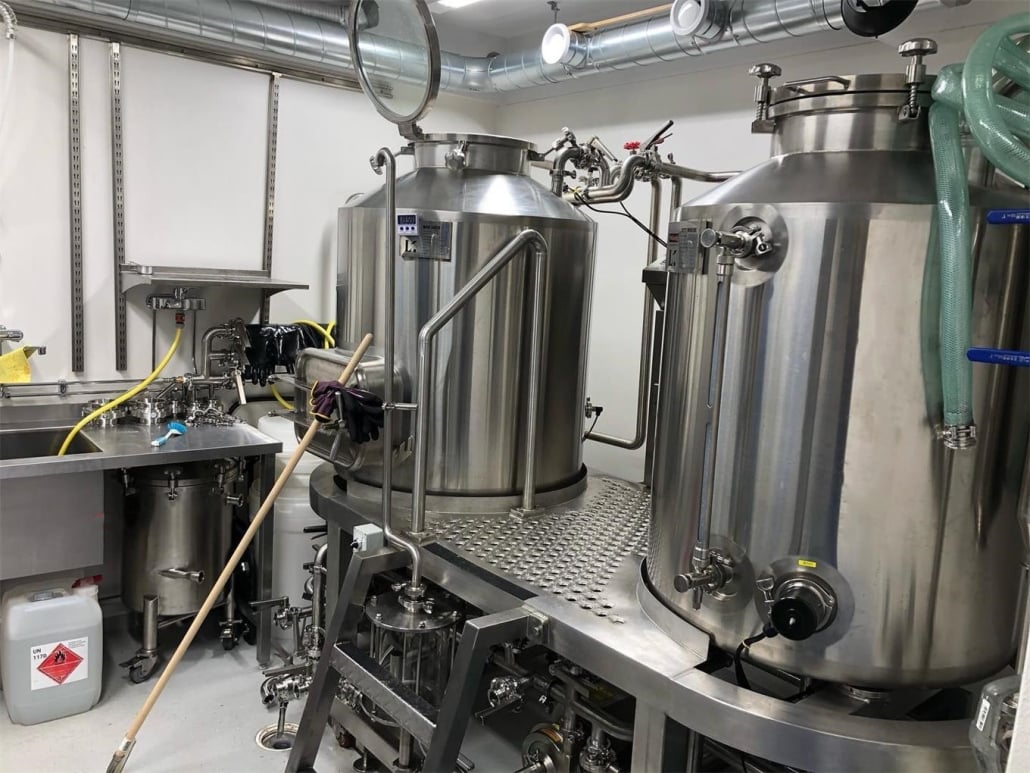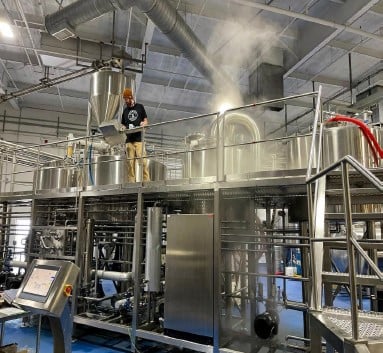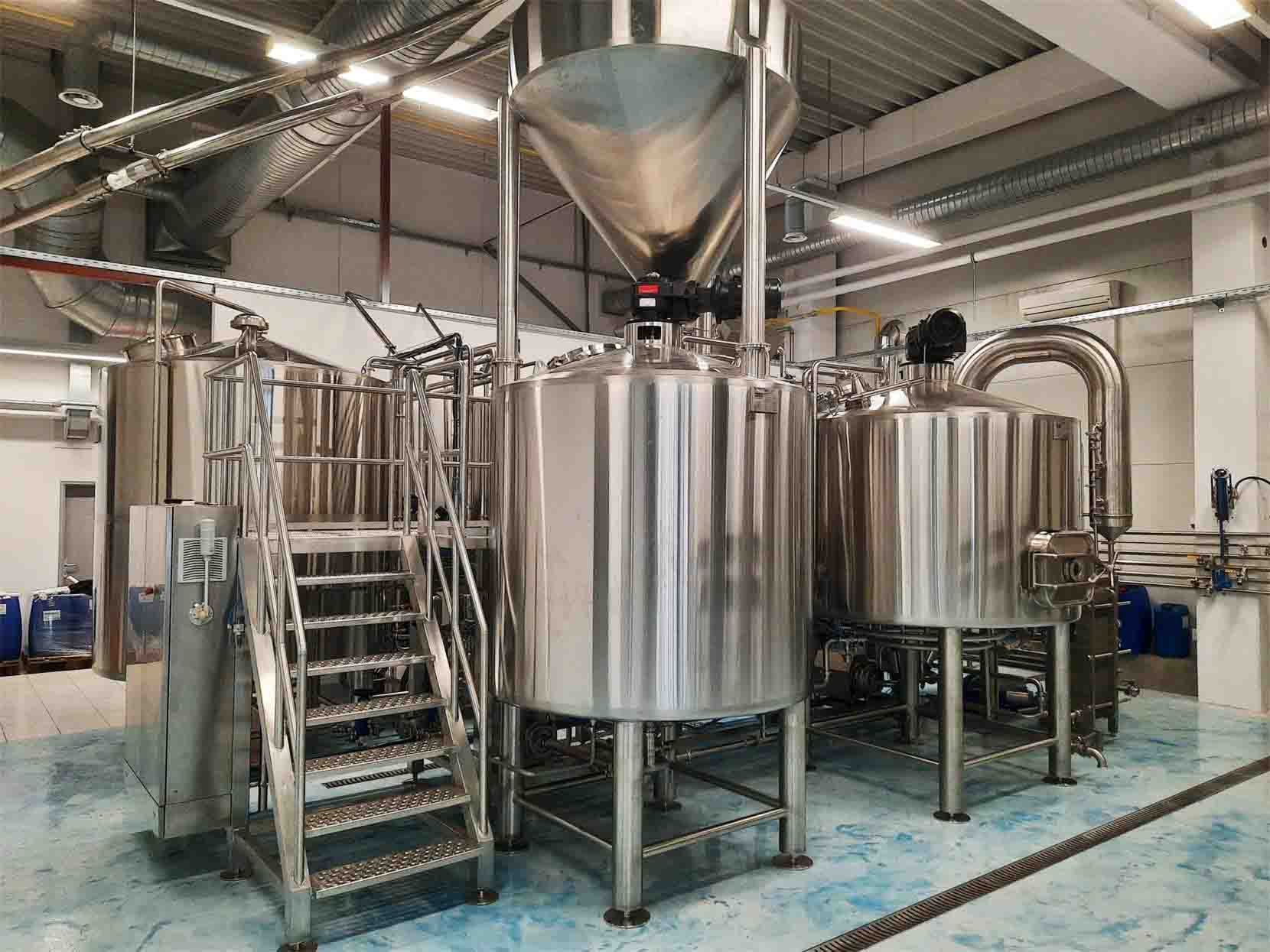How to Start a Brewery
Starting a brewery is a dream for many beer enthusiasts and entrepreneurs. But it’s not just about having a passion for brewing; it requires a combination of business acumen, knowledge of the brewing process, and an understanding of the market. This guide will walk you through everything you need to know to start your own brewery, from planning and equipment to brewing processes and operational considerations.
Overview of Starting a Brewery
Brewing beer is both an art and a science. To turn this passion into a successful business, you’ll need a solid plan, the right equipment, and a thorough understanding of the brewing process. Additionally, navigating the legal and regulatory environment is crucial. Here’s an in-depth look at what you need to consider.

Planning Your Brewery
Before diving into the brewing process, you need to lay a solid foundation for your brewery. This involves market research, business planning, and securing funding.
Market Research and Business Planning
Understanding your target market is critical. Who are your potential customers? What kind of beers do they prefer? Conducting thorough market research will help you tailor your offerings and position your brewery effectively.
Your business plan should cover:
- Executive Summary: An overview of your business, including your mission and vision.
- Market Analysis: Insights into your target market, competitors, and industry trends.
- Marketing Strategy: How you plan to attract and retain customers.
- Operational Plan: Details of your production process, supply chain, and logistics.
- Financial Plan: Projections of your startup costs, revenue, and profitability.
Securing Funding
Starting a brewery can be capital-intensive. You’ll need funds for equipment, location, licensing, and initial operations. Potential sources of funding include personal savings, bank loans, investors, and crowdfunding.
Brewing Equipment Guide
Choosing the right equipment is crucial for producing high-quality beer consistently. Your equipment choices will depend on your production scale, budget, and the types of beer you plan to brew.
Types of Brewing Equipment
| Equipment | Description |
|---|---|
| Mash Tun | Used to mix and heat the malt with water, starting the conversion of starches. |
| Lauter Tun | Separates the liquid wort from the spent grain. |
| Brew Kettle | Boils the wort with hops and other ingredients. |
| Fermentation Tanks | Where the wort is fermented into beer. |
| Bright Beer Tanks | Used for maturation, clarification, and carbonation of beer. |
| Heat Exchanger | Cools down the wort before fermentation. |
| Pumps and Hoses | Essential for transferring liquids between different stages of the process. |
| Cleaning Equipment | Important for maintaining hygiene and quality. |
| Packaging Equipment | Includes bottling, canning, and kegging systems. |
Brewing Process
The brewing process consists of several key steps, each requiring specific equipment and precise control.
1. Mashing
In the mash tun, crushed malt is mixed with hot water to convert starches into fermentable sugars. The temperature and duration of this step are crucial for determining the final beer’s flavor and body.
2. Lautering
After mashing, the mixture is transferred to the lauter tun, where the liquid wort is separated from the spent grains. The wort is then rinsed (or sparged) to extract as much sugar as possible.
3. Boiling
The wort is boiled in the brew kettle with hops and other ingredients. This step sterilizes the wort, extracts flavors from the hops, and evaporates unwanted compounds.
4. Cooling
The hot wort is rapidly cooled using a heat exchanger before being transferred to the fermentation tanks. This step is critical to prevent contamination and ensure proper fermentation.
5. Fermentation
In the fermentation tanks, yeast is added to the wort, converting sugars into alcohol and carbon dioxide. The fermentation period can vary depending on the beer style.
6. Conditioning
After primary fermentation, the beer is conditioned in bright beer tanks. This stage allows flavors to mature, clarifies the beer, and adds carbonation.
7. Packaging
Finally, the beer is packaged into bottles, cans, or kegs using specialized packaging equipment. This step requires careful handling to maintain quality and prevent contamination.
Capacity, Spaces, Design, Layout, Customization
| Aspect | Details |
|---|---|
| Capacity | Choose equipment that matches your production goals, from small-scale pilot systems to large commercial setups. |
| Space | Ensure you have enough space for equipment, storage, and operations. Consider future expansion. |
| Design | Focus on ergonomic and efficient designs to streamline the brewing process. |
| Layout | Plan a logical layout that minimizes movement and maximizes productivity. |
| Customization | Customizable equipment can better meet specific brewing needs and space constraints. |
Suppliers and Price Range
| Supplier | Equipment | Price Range |
|---|---|---|
| A | Mash Tuns, Brew Kettles | $10,000 – $50,000 |
| B | Fermentation Tanks, Pumps | $5,000 – $30,000 |
| C | Heat Exchangers, Packaging | $3,000 – $20,000 |
| D | Comprehensive Brewing Systems | $50,000 – $200,000 |
Installation, Operation, Maintenance
| Aspect | Details |
|---|---|
| Installation | Professional installation ensures proper setup and integration of your equipment. Consider hiring experienced technicians. |
| Operation | Training for you and your staff on how to use the equipment efficiently and safely. |
| Maintenance | Regular maintenance schedules to prevent breakdowns and ensure longevity. Keep spare parts and establish relationships with service providers. |
Choosing a Supplier
| Criteria | Details |
|---|---|
| Reputation | Look for suppliers with positive reviews and a strong track record in the industry. |
| Support | Consider suppliers who offer robust customer support and after-sales service. |
| Customization | Suppliers who offer customization options can better meet your specific needs. |
| Pricing | Balance cost with quality; cheaper isn’t always better. |
| Delivery Time | Ensure the supplier can deliver within your required timeframe. |
Pros and Cons of Equipment Options
| Equipment Type | Advantages | Limitations |
|---|---|---|
| Stainless Steel Tanks | Durable, easy to clean, resists contamination | Higher initial cost |
| Plastic Fermenters | Lower cost, lightweight | Less durable, can retain odors and stains |
| Automated Systems | Increases efficiency, consistency in production | Expensive, requires technical knowledge for operation |
| Manual Systems | Lower cost, more control over brewing process | Labor-intensive, potential for human error |
Brewing Process Explained
The brewing process involves converting raw ingredients into delicious beer through a series of well-controlled steps. Each step plays a vital role in determining the flavor, aroma, and quality of the final product.
Mashing
Mashing involves mixing milled grain (usually barley) with hot water to activate enzymes that convert starches into fermentable sugars. This mixture, known as the mash, is held at specific temperatures to optimize enzyme activity.
Lautering
After mashing, the mash is transferred to a lauter tun. Here, the liquid wort is separated from the grain husks. The wort is then rinsed with hot water (sparging) to extract additional sugars.
Boiling
The wort is boiled in the brew kettle for sterilization and to extract flavors and bitterness from hops. Boiling also helps evaporate unwanted volatile compounds. The duration and intensity of the boil can influence the final beer’s characteristics.
Cooling
The hot wort is rapidly cooled using a heat exchanger to a temperature suitable for fermentation. Quick cooling is essential to prevent contamination and ensure yeast health.
Fermentation
Yeast is added to the cooled wort in fermentation tanks. The yeast converts fermentable sugars into alcohol and carbon dioxide. The conditions during fermentation, such as temperature and yeast strain, significantly impact the beer’s flavor profile.
Conditioning
Conditioning involves aging the beer to develop its flavors and improve clarity. This can be done in bright beer tanks where the beer is also carbonated. The length of conditioning varies depending on the beer style.
Packaging
Finally, the beer is packaged into bottles, cans, or kegs. Proper packaging ensures the beer’s quality and extends its shelf life. This step requires precision to avoid contamination and oxidation.
Operational Considerations
Running a brewery involves more than just brewing beer. You need to manage operations, staff, marketing, and compliance with legal regulations.
Staffing
Hiring skilled staff is essential for smooth operations. Depending on the size of your brewery, you may need brewers, cellar workers, packaging staff, sales and marketing personnel, and administrative support.
Marketing and Sales
Effective marketing strategies are vital for attracting customers. This can include social media marketing, events, collaborations, and taproom promotions. Building a strong
brand and community presence will help drive sales.
Compliance and Licensing
Breweries must comply with various local, state, and federal regulations. This includes obtaining the necessary licenses and permits, adhering to health and safety standards, and paying excise taxes.

FAQ
| Question | Answer |
|---|---|
| What is the cost of starting a brewery? | The cost can range from $100,000 to several million dollars, depending on the size and scope of your brewery. Initial costs include equipment, location, licensing, and operational expenses. |
| How long does it take to start a brewery? | The timeline can vary but generally takes 6 months to a year. This includes planning, securing funding, acquiring equipment, obtaining licenses, and setting up the brewery. |
| What licenses do I need to start a brewery? | You’ll need federal, state, and local licenses. The specific requirements vary by location, so it’s essential to research and comply with all relevant regulations. |
| How can I market my brewery? | Use a mix of social media, events, collaborations, and traditional advertising. Building a strong brand and community presence is crucial for attracting and retaining customers. |
| What are the key factors for brewing quality beer? | Consistency, cleanliness, and quality ingredients are essential. Precise control over the brewing process and proper maintenance of equipment also play significant roles. |
Starting a brewery is a complex but rewarding endeavor. By carefully planning, investing in the right equipment, and understanding the brewing process, you can turn your passion for beer into a successful business. Remember to stay adaptable and continuously learn from your experiences and industry trends.
Additional FAQs on Starting a Brewery (2025)
1) How much working capital should a new brewery budget beyond startup CAPEX?
- Plan 6–9 months of operating expenses. Typical ranges: 15–25% of total project cost to cover payroll, raw materials, utilities, rent, and distribution ramp-up.
2) What production size is most viable for a first location taproom brewery?
- Many 7–10 BBL brewhouses with 60–90 BBL of cellar capacity (unitanks/brite) can support 1,200–2,500 bbl/year with healthy taproom margins and limited wholesale.
3) How do I choose between contract brewing and building my own brewery?
- Contract brewing reduces CAPEX and time-to-market but limits control/margins. It’s best for market testing or seasonal spikes; owning equipment builds brand equity and long-term margins.
4) What are the most common permit bottlenecks in 2025?
- Fire/life safety (trench drains, CO2 monitoring), wastewater/pretreatment approvals, alcohol licensing background checks, and mechanical/electrical inspections. Start these in parallel early.
5) What quality lab basics are essential from day one?
- Dissolved oxygen meter (packaged), hydrometer/refractometer, pH meter, microscope for cell counts/viability, ATP swabs, CO2/vol measurement, and at least basic microbiology plates for contamination checks.
2025 Industry Trends New Founders Should Know
- Smaller-footprint “taproom-first” models with limited wholesale remain resilient; packaging decisions are often deferred or outsourced initially.
- QA instrumentation adoption earlier in the lifecycle (TPO/DO meters, seam tools) to protect hop-forward styles and reduce returns.
- Energy and utility optimization baked into design: heat recovery, efficient glycol, and CO2/N2 management to combat higher operating costs.
- Workforce and SOP digitization: recipe-driven brewhouse controls, guided CIP, and HACCP/traceability software to meet retailer audit expectations.
- Financing mix shifts: more SBA 7(a)/504 usage and equipment leasing; grants/rebates for energy efficiency are increasingly tapped to improve ROI.
2025 Startup Cost Benchmarks and Key Metrics
| Metric (North America/EU 2025) | Typical Range | Notes/Source |
|---|---|---|
| Turnkey 7–10 BBL brewhouse + cellar (installed) | $350k–$850k | Includes tanks, glycol, utilities; excludes real estate |
| Taproom build-out (1,500–3,500 sq ft) | $150k–$600k | FF&E, bar, cold room, drains, CO2 monitoring |
| Packaging starter (keg-only vs canning add-on) | $10k–$25k kegging; +$90k–$200k canning | Many defer canning via mobile services |
| Working capital reserve | 15–25% of total project | 6–9 months OPEX recommended |
| Average permit/approval timeline | 4–9 months | Jurisdiction dependent |
| Utility demand (10 BBL brewhouse) | 150–300 kBTU/h heat; 7–15 HP glycol | Load varies by process/ambient |
Selected sources: Brewers Association 2024–2025 benchmarking, SBA lender guidance, vendor catalogs (G&D, Specific Mechanical, ProBrew), industry trade press (BrewBound, Craft Brewing Business).
Latest Research Cases
Case Study 1: Taproom-First Brewery Achieves Profitability in 11 Months (2025)
- Background: New urban brewery with 10 BBL system sought fast payback without heavy packaging CAPEX.
- Solution: Designed a taproom-centric layout, keg-only distribution to nearby accounts, mobile canning for quarterly releases, and early investment in QA (DO/TPO meter).
- Results: 1,650 bbl in year one at 72% on-premise volume; EBITDA-positive by month 11; 1.1% average yield improvement from DO control reduced product loss and returns.
Case Study 2: Energy-Efficient Utilities Cut Operating Costs by 18% (2024)
- Background: Suburban startup faced high gas/electric rates impacting cash flow.
- Solution: Implemented heat recovery (wort-to-HLT), high-efficiency boiler, VFDs on pumps/fans, improved cold room insulation, and CO2/N2 optimization.
- Results: 18% reduction in utility cost per bbl; simple payback on efficiency upgrades in 20 months; utility rebates covered 12% of project spend.
Expert Opinions
- Bart Watson, Chief Economist, Brewers Association
- Viewpoint: “Right-sizing to local demand and focusing on taproom sales remains the most reliable path to early profitability for new breweries.”
- Source: Brewers Association economic updates, 2024–2025
- Laura Ulrich, Brewer and Industry Leader (Pink Boots Society Past President)
- Viewpoint: “Invest early in people and process—SOPs, QA checkpoints, and safety training. Consistency wins repeat customers more than any single flagship recipe.”
- Source: Industry panels and educational programs, 2024–2025
- Tom Shellhammer, Ph.D., Professor of Fermentation Science, Oregon State University
- Viewpoint: “Oxygen management and cold-side hygiene are non-negotiable for hop-forward beers. Modest QA tools can materially extend shelf life and brand reputation.”
- Source: Academic publications and brewer workshops, 2024–2025
Practical Tools and Resources
- Brewers Association Startup and Benchmarking Guides: https://www.brewersassociation.org
- SBA 7(a) and 504 Loans (financing a brewery): https://www.sba.gov
- DSIRE energy incentives for efficiency upgrades: https://www.dsireusa.org
- ProBrewer forums (real-world build-out/permit threads): https://www.probrewer.com
- OSHA Small Business Safety guidance (brewery hazards): https://www.osha.gov
- HACCP Plan Builder (USDA/FSIS): https://www.fsis.usda.gov/resources/haccp-plan-builder
- Craft Maltsters Guild (sourcing and quality): https://craftmalting.com
- G&D Chillers sizing resources: https://gdchillers.com
- Specific Mechanical and ProBrew (brewhouse/tank specs): https://specificmechanical.com | https://www.probrew.com
- Anton Paar QA instruments (DO/TPO, CO2/O2): https://www.anton-paar.com
Note: Verify local code requirements (fire, wastewater, CO2 monitoring), electrical/pressure certifications (UL/CE, ASME), and food-contact compliance. Build a documented QA/SOP system aligned with BA and ASBC standards to support retailer audits and consistent beer quality.
Last updated: 2025-09-29
Changelog: Added 5 targeted FAQs, 2025 trend insights with cost/metric table, two recent case studies, expert viewpoints, and curated tools/resources with authoritative links
Next review date & triggers: 2026-03-31 or earlier if financing rates shift >150 bps, utility incentives change materially, or BA benchmarking updates alter key startup cost assumptions
Share this entry
Interested in learning more about Brewing Systems including additional details and pricing information? Please use the form below to contact us!
YOLONG BREWERY EQUIPMENT FAQS
- Commercial Brewery / Craft Brewery / Microbrewery / Nanobrewery
- What is The Difference Between Craft Beer and Industrial Beer?
- The Bespoke Differences In Custom Brewing Systems
- Everything You Need to Know About Kettle Souring
- How to Choose Brewing Equipment for Your business?
- How To Choose The-Best Partner To Build Your Commercial Microbrewing System?
- Two Detection Sensors That You Need To Use In Your Brewhouse System
- Remote Control Applications in Brewing Equipment/How does it work?
- How To Clean Your Brand New Brewery Tanks?

